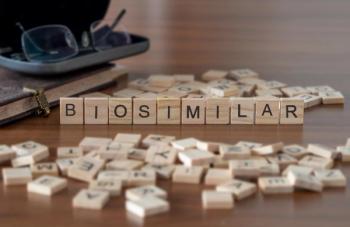
Disease-Related Hospital Utilization, Drug Costs Drive Economic Burden in Multiple Myeloma
A poster presented at the American Society of Hematology Annual Meeting and Exposition assessed disease-related health care utilization and costs among patients with multiple myeloma.
Multiple myeloma (MM) drug costs, followed by hospital utilization, account for the majority of disease-related costs in these patients, according to a study presented at the American Society of Hematology Annual Meeting and Exposition.
Although several therapies have received FDA approval for the treatment of MM since 2015, there are limited economic data for these newer MM drugs. The study aimed to assess all-cause and disease-related health care utilization and costs among newly-diagnosed and treated patients with MM in the United States.
Using a large national administrative claims database, the researchers collected data on persons enrolled in commercial health plans or in Medicare supplemental plans. Study participants were identified using medical and pharmacy claims from approximately 163 million individuals enrolled in a plan at any time between January 2011 and June 2018.
The study included 3144 newly diagnosed patients with MM. After first-line treatment, 56.1% received second-line therapy, 29.9% received third-line therapy, 15.7% received fourth-line treatment, and 7.6% had ≥5 lines of treatment. Many patients received multiple lines of treatment: monotherapy was used for 24% of patients, doublets for 38%, triplets for 37%, and 4 or more drugs for 1.5% of patients, according to the data. Some regimens included up to 9 drugs.
Overall, 94.8% of patients had ≥1 MM-related hospital outpatient visit and 81.7% had ≥1 outpatient pharmacy claim, according to the results. Furthermore, 77.7% of patients had ≥1 MM-related inpatient hospital admission with an average length of stay for each admission of 12 days.
In terms of cost, the total average follow-up costs from all causes were $288,304 ($333,673) of which MM disease-related costs for all lines of therapy accounted for 87.8%.
The findings showed:
- Pharmacy drugs accounted for 32.9% of total disease-related costs, whereas hospital inpatient visits were 29.3% of cost and hospital outpatient (mostly provider-administered drugs) were 26.2% of total disease-related costs.
- The disease-related cost per member per month (PMPM) for the total follow-up period was $14,140.
- The average disease-related PMPM costs for each line of therapy were $16,342 ($20,028) for first line, $19,267 ($29,645) for second line, $17,773 ($23,347) for third line, and $20,146 ($26,401) for fourth line.
Based on the results, the researchers concluded that pharmacy and hospital inpatient utilization accounted for two-thirds of total disease-related costs in patients with MM.
“In combination with the clinical data, the economic and resource use of data serve as inputs in assessing value and budget impact of newer treatment,” the researchers concluded.
Reference
- Tran D, Kamalakar R, Manthena S, Karve S. Economic burden of multiple myeloma: Results from a large employer-sponsored real-world administrative claims database, 2012 to 2018 [Poster 3414]. Presented at: American Society of Hematology Annual Meeting and Exposition. December 8, 2019. Orlando, Florida.
Newsletter
Stay informed on drug updates, treatment guidelines, and pharmacy practice trends—subscribe to Pharmacy Times for weekly clinical insights.








































































































































































































